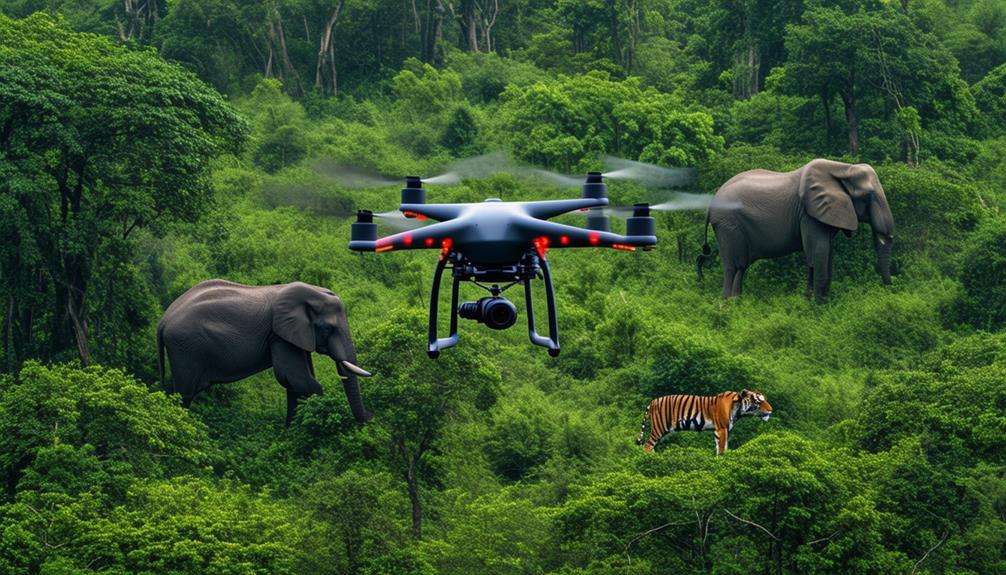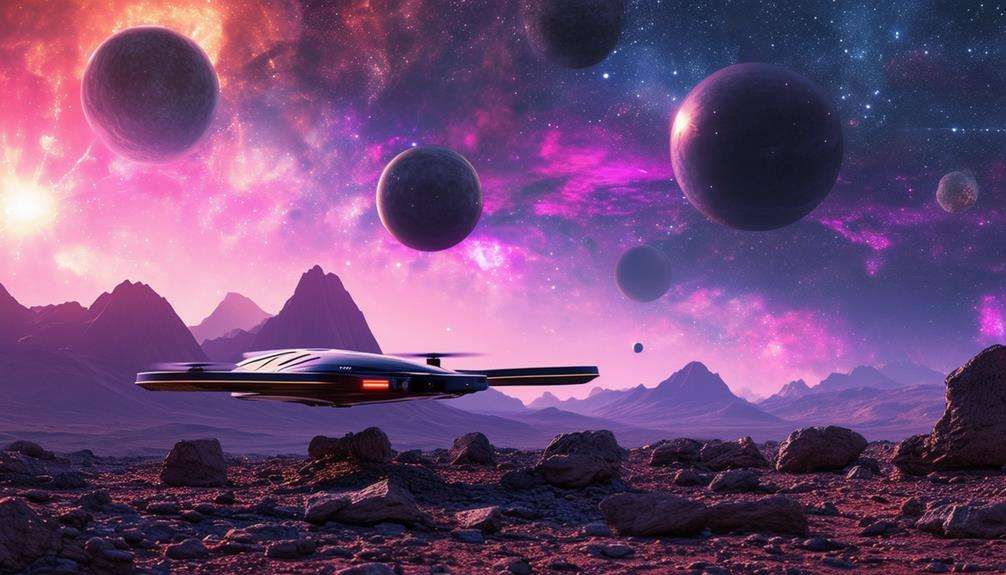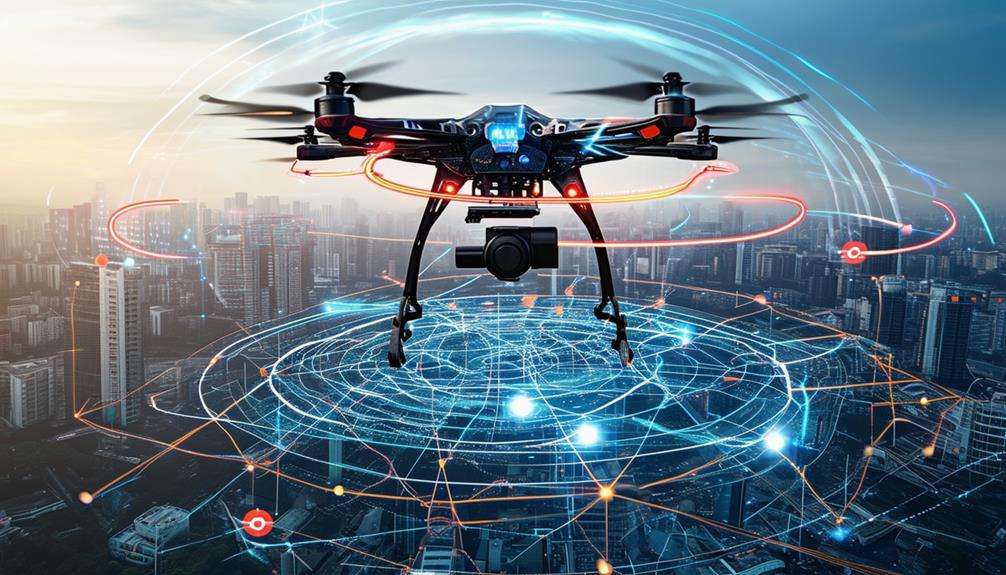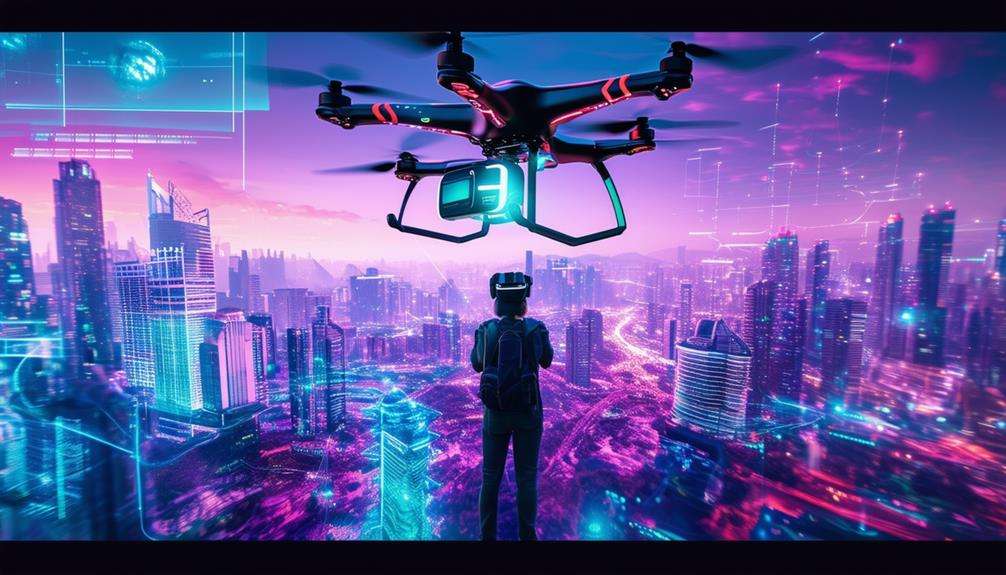How Multirotor Drones Operate: A Technical Overview
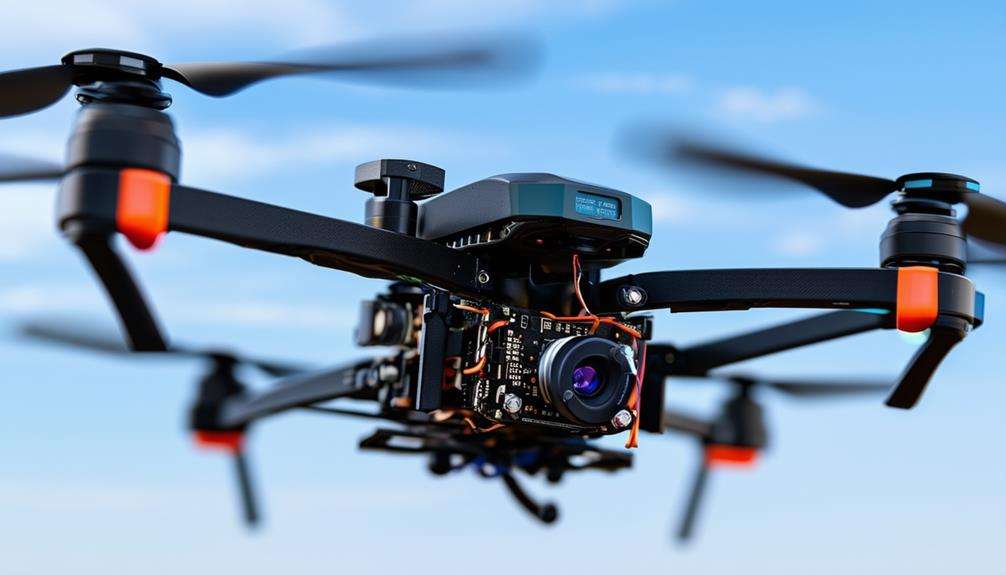
Multirotor drones capture our imagination with their ability to hover and perform intricate maneuvers. But how do these sophisticated machines function? At the core, they operate on fundamental aerodynamic principles: propellers generate lift by pushing air downward. Yet, that's only the beginning. The flight control system, equipped with gyroscopes and accelerometers, ensures the drone remains stable and agile. Additionally, the integration of sensors and precise motor coordination is crucial for their efficiency. Intrigued by how all these components harmonize? Let's explore the technical details.
Aerodynamic Principles
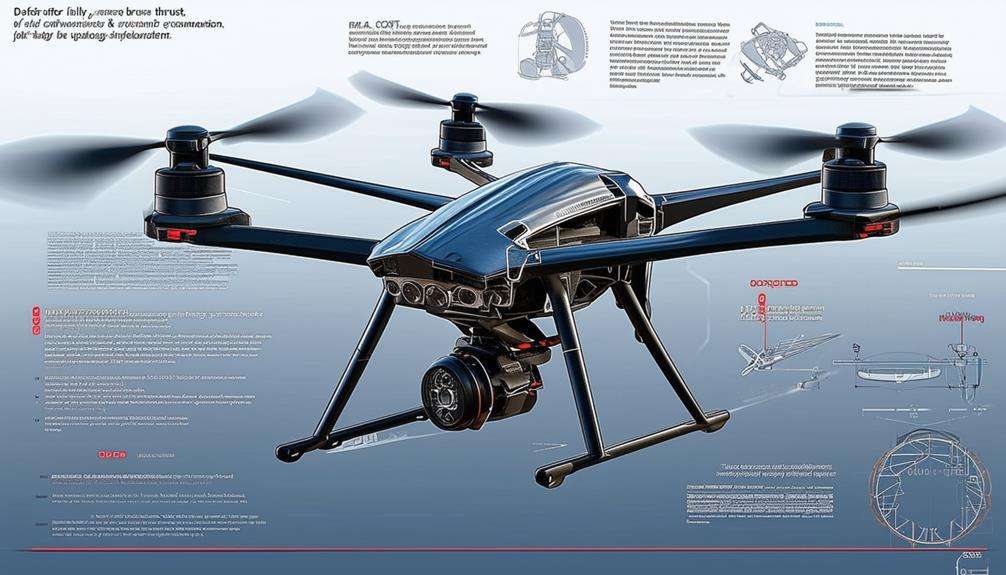
Mastering the operation and control of multirotor drones hinges on understanding their aerodynamic principles. Central to this is the generation of lift through the rotation of the propellers. As the rotors spin, they push air downwards, creating an upward force known as lift. This lift results from the pressure difference above and below the rotors, allowing the drone to ascend and hover.
The motors and propellers are crucial in maintaining this lift. The motors drive the propellers, while the Electronic Speed Controller (ESC) regulates their speed. As the propellers rotate, they push air downwards, counteracting gravity to keep the drone airborne.
Stability and precise maneuverability are achieved through the coordinated rotation of the propellers. By adjusting the speed of individual rotors, you can control the drone's orientation and movement. For example, the drone's yaw, or rotation around its vertical axis, can be controlled by varying the speeds of clockwise and counterclockwise rotating propellers. Understanding these aerodynamic principles will significantly enhance your ability to control and navigate your multirotor drone effectively.
Flight Control Systems
Flight control systems are crucial for stabilizing and maneuvering multirotor drones in the air. These systems rely on various sensors to measure the drone's orientation and motion. Central to this process are gyroscopes and accelerometers, which collect data on the drone's pitch, roll, yaw, and altitude. This data is then processed to make real-time adjustments.
Autopilot software serves as the system's brain, interpreting sensor data and adjusting the speed of individual rotors. This ensures the drone remains stable and can perform precise maneuvers, regardless of conditions such as calm weather or gusty winds. The flight control system continuously works to maintain the drone's balance.
Below is an overview of the key components and their functions:
| Component | Function |
|---|---|
| Gyroscopes | Measure rotational movement around the axes |
| Accelerometers | Detect changes in speed and direction |
| Autopilot Software | Interpret sensor data and issue control commands |
| Rotors | Adjust speed based on commands to stabilize flight |
This interaction between components is essential for the reliable operation of multirotor drones.
Sensor Integration
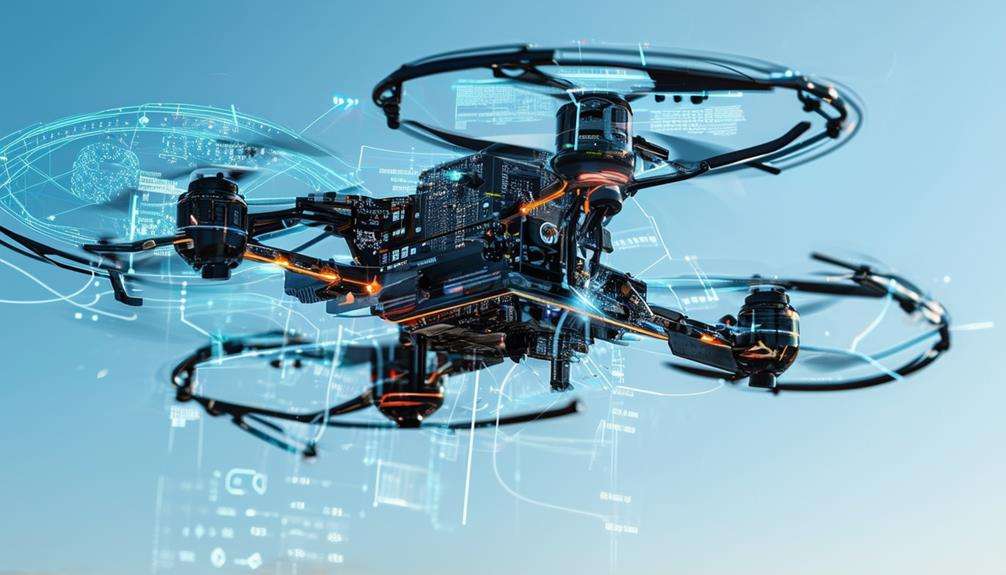
Incorporating multiple sensors such as gyroscopes, accelerometers, barometers, and GPS is crucial for achieving stable and precise multirotor drone operation. Each sensor has a specific role: gyroscopes provide orientation data, accelerometers measure acceleration, barometers monitor altitude, and GPS tracks position. Together, they enable the drone to maintain its position, adjust altitude, and navigate accurately in diverse environments.
Sensor fusion algorithms are vital for synthesizing this data. By integrating information from the gyroscope, accelerometer, barometer, and GPS, these algorithms enhance flight stability and accuracy. For example, when the accelerometer detects a change in speed or direction, the gyroscope can confirm the orientation, allowing the drone to make precise adjustments.
Barometers are particularly valuable for altitude control, providing real-time altitude data to help the drone adjust its height. Meanwhile, GPS offers precise location information, ensuring the drone can navigate to specific coordinates without drifting off course.
Collectively, these sensors create an interoperable system that dynamically responds to changing conditions, ensuring the drone remains stable and reliable during flight. Sensor integration is, therefore, a critical aspect of multirotor drone operation.
Motor Coordination
Controlling a multirotor drone's altitude, orientation, and movement requires precise coordination of motor speeds. This motor coordination is fundamental to stabilizing the drone during flight. By adjusting motor speeds, you can make the drone ascend, descend, rotate, and move horizontally, impacting the flight dynamics and allowing effective control over pitch, roll, and yaw.
To make the drone ascend, you increase the motor speeds uniformly. Conversely, decreasing the motor speeds will cause the drone to descend. For horizontal movement, adjusting the speeds of specific motors will tilt the drone, affecting pitch and roll. Rotational movement, or yaw, is controlled by varying the speeds of diagonally opposite motors.
Proper motor coordination is essential for smooth and controlled flight. If motor speeds aren't balanced correctly, the drone can become unstable and difficult to control. Therefore, mastering motor coordination is crucial for any multirotor drone pilot.
Autonomous Navigation
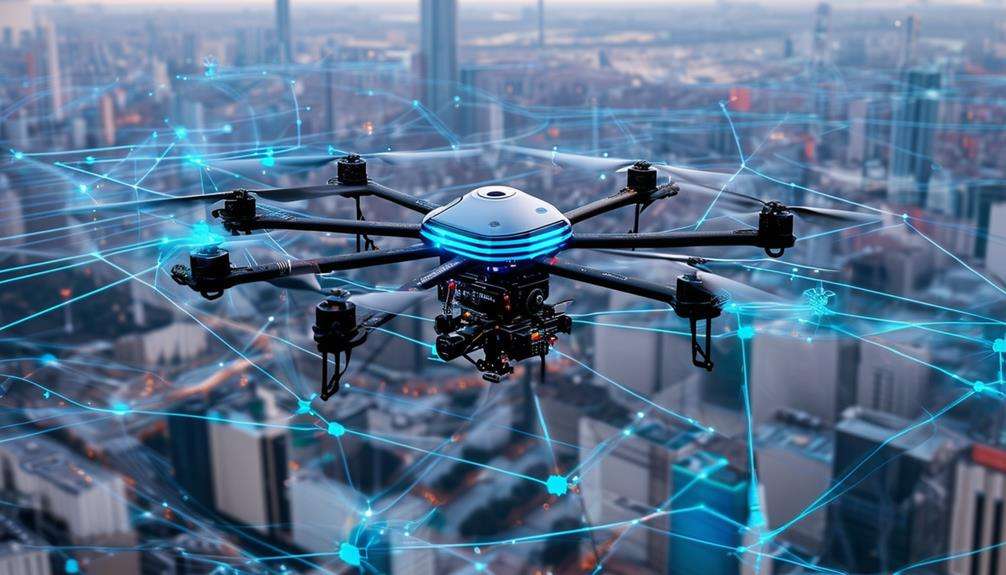
Autonomous navigation in multirotor drones leverages advanced control algorithms to manage propeller speeds for precise and efficient flight. Central to this process are PID controllers, which are essential for regulating throttle, roll, pitch, and yaw movements. These controllers continuously adjust propeller speeds to maintain stability and adapt to environmental changes.
Beyond maintaining balance, autonomous navigation heavily depends on perception algorithms. These algorithms analyze data from onboard sensors, such as cameras and LIDAR, to generate a real-time map of the drone's surroundings. This capability allows the drone to navigate obstacles and reach its destination efficiently.
Drone technology companies are continually enhancing these capabilities. By improving perception and image processing algorithms, they aim to make drones more autonomous, minimizing the need for human oversight.
Much like commercial airplanes, these drones employ sophisticated algorithms to ensure precise control and positioning. The goal is to boost operational efficiency and unlock new applications for drones, from delivery services to search and rescue missions.
Conclusion
Understanding the operation of multirotor drones requires a grasp of several interconnected components. Aerodynamic principles explain how lift is generated, allowing the drone to ascend and hover. Flight control systems, integrated with sensors, ensure stability and precise maneuverability. Motor coordination is essential for maintaining balance and executing directional changes.
Autonomous navigation systems enable drones to operate independently, following pre-programmed routes or responding to real-time data. These elements collectively demonstrate the advanced technology that makes drones versatile and efficient.
Happy flying!

